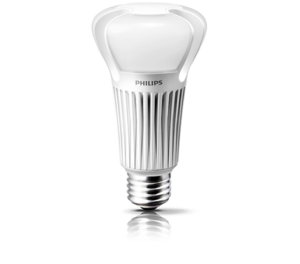Several years ago, 2012 to be exact, when new efficiency standards for light bulbs first kicked in, there was a hue and cry from talk radio hosts. They lamented the death of the “Edison light bulb” and told listeners that the government was forcing everyone to switch to inferior, “mercury-laced,” compact fluorescent bulbs (CFLs). Some even partnered with retailers to frantically urge their audience to stockpile the old inefficient bulbs.
It wasn’t long before some lawmakers jumped on the bandwagon and introduced legislation to block the standards, which were part of a 2007 bi-partisan energy bill signed into law by President George W. Bush.
Congressman Michael Burgess (R-TX) introduced various measures trying to block the standards or prohibit enforcement, and libertarian Senator Rand Paul (R-KY), citing an Ayn Rand novel, ranted about how consumer choice was being “crushed beneath the boot heel of the collective.”
All of this angst was based entirely on talk-radio fiction. The truth was quite different.
U.S. light bulb manufacturers, who were behind the push for nationwide efficiency standards, had already retooled their factories to produce improved incandescent bulbs that would meet the new standards, generating light with less waste heat. In fact, those new bulbs—which produced the exact same kind of light as the old versions—were already on store shelves more than six months before the standards went into effect.
The lighting manufacturers also knew that CFLs were rapidly being squeezed out of the market. On price, the new improved incandescent bulbs were cheaper, and on quality, LED bulbs were longer lasting and far more efficient.
Fast forward to today. Now that these light bulb efficiency standards have been in place for a while, let’s examine the impact on consumer choice and cost.
The improved incandescent bulbs range in price from $1.25 to $2.00 per bulb depending on brightness and brand—which is in the same ballpark as the old incandescent bulbs. They look, light and dim the same the old versions, but do so using 28 percent less energy.
 Even more notable, the price of LED bulbs has plummeted. Regular style 60 watt equivalent LEDs are available for as little as $3.25 per bulb, with 100 watt equivalent versions in the $5 to $6 range. They were priced closer to $20 each just a few years ago.
Even more notable, the price of LED bulbs has plummeted. Regular style 60 watt equivalent LEDs are available for as little as $3.25 per bulb, with 100 watt equivalent versions in the $5 to $6 range. They were priced closer to $20 each just a few years ago.
The energy savings are equally dramatic. LED bulbs use about 14 percent of the energy to produce the same amount and quality of light as an incandescent bulb. On top of that, they have a lifespan of more than 10,000 hours, or roughly 10 years.
As for the big bad CFLs, their sales have plummeted and some lighting manufacturers are ending production of them.
Opponents of the light bulb efficiency standards were wrong about everything. Consumer choice has been enhanced-not reduced, there was no mandated CFL use, and the cost of lighting our homes has not increased, it has declined significantly.
This should be no surprise. Those light bulb standards represent the same type of conservative, common-sense, efficiency benchmarks President Ronald Reagan signed into law in the 1980s for refrigerators, fluorescent lighting ballasts, and other appliances.
Just as no one today is wandering around their local appliance dealer pining away for Jimmy Carter-era refrigerators, those who were once apocalyptic about the demise of old-tech bulbs are no doubt basking in the glow—and savings—of an eco-friendly LED.


Fear, a strong emotion and selling point for talk-radio hosts that allows them to get outrageous fees that we all pay.
Glad that CRS is there to monitor, and truthfully report, on such scaremongering. Keep up the good work CRS.
Some conservative voters have common sense. Excellent article.